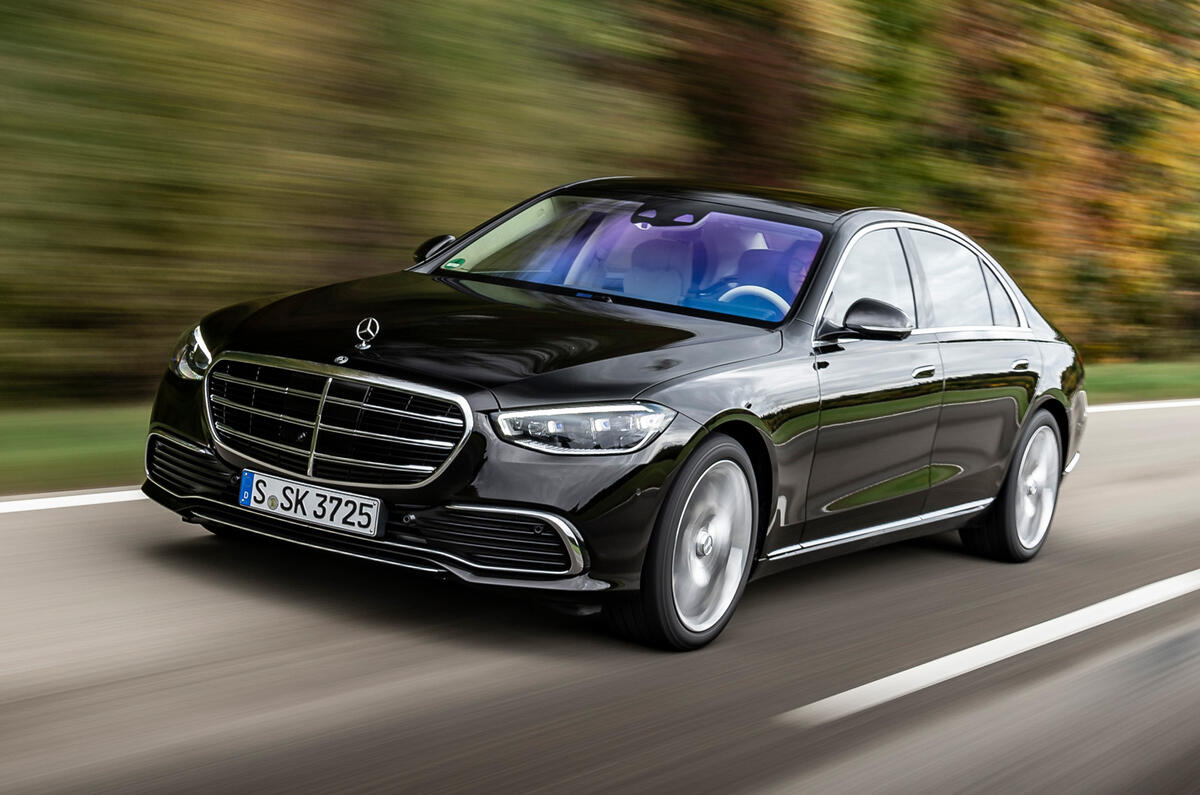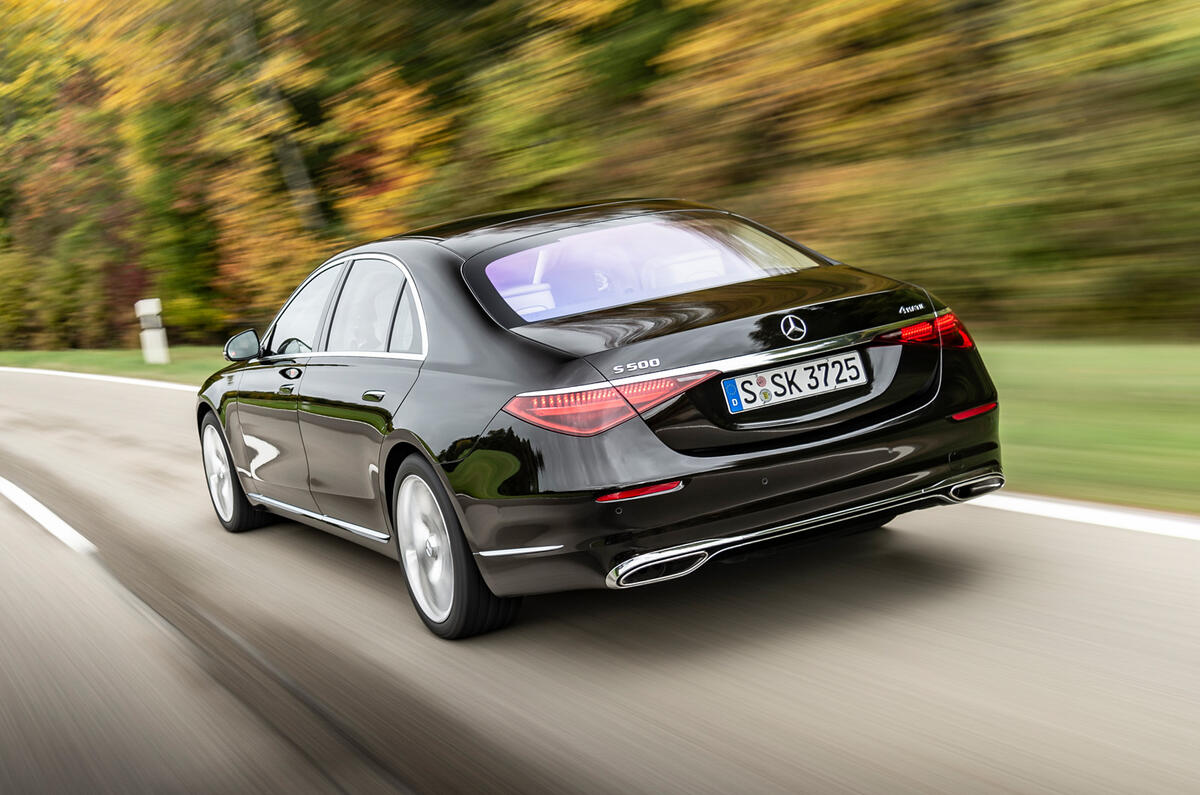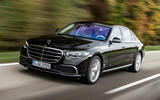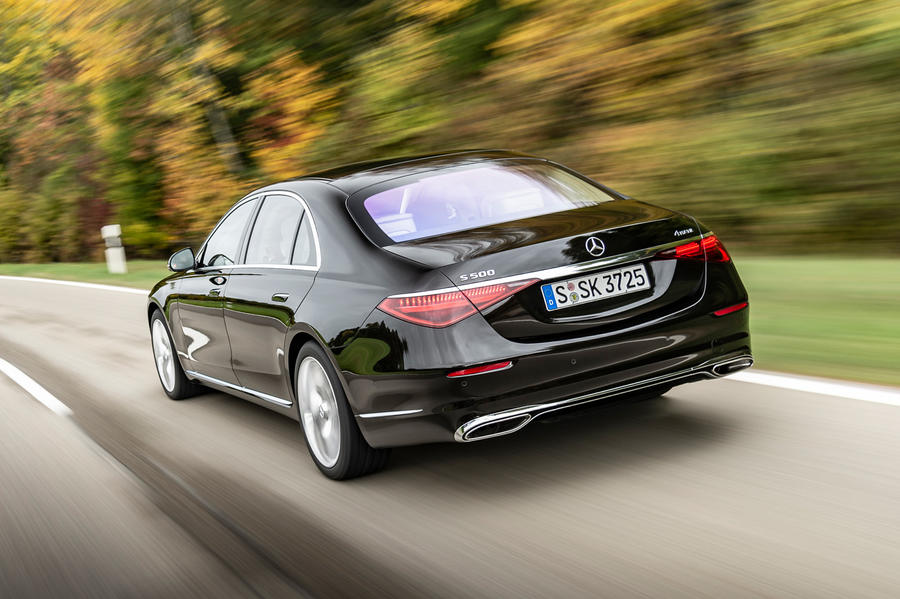What is it?
Meet the most advanced production car yet to wear the three-pointed star.
Not since the very first Mercedes-Benz models started rolling off the production line in 1926 to set the brand on course for global luxury car prominence has Stuttgart attempted to produce something approaching the engineering complexity and sheer technical ambition of the new S-Class saloon.
“In investment terms, no other Mercedes model comes close,” says Jürgen Weissinger, the man charged with the development of the seventh-generation S-Class and its upcoming new sister model, the electric EQS.
The Mk7 S-Class isn’t just new; it also represents an entirely different engineering and technical philosophy to the car it replaces. It’s one centred on electrification, digitisation and connectivity, albeit within the flagship model’s traditional values of comfort, refinement and performance.
It’s the first Mercedes developed to drive fully autonomously without a driver, if only within the confines of a suitably networked parking garage, where it will search for empty bays and park itself fully remotely. This is part of a newly developed Park Pilot system that draws on level-four autonomous driving technology not yet offered by any competitor.
Furthermore, the S-Class now supports level-three driving at an EU-prescribed top speed of 37mph (at first only on selected sections of German autobahn) as a function of a new Drive Pilot system that uses lidar, short- and long-range radar, ultrasonic sensors, cameras and, it’s claimed, the most advanced GPS yet to feature in a production car.
Another first is over-the-air capability, which allows remote software updates to be made for more than 50 different components via an embedded SIM card.
It’s a bold leap in technical terms even by S-Class standards, driven by recent advances made by rivals such as the latest Audi A8, BMW 7 Series, Lexus LS and Tesla Model S, no less, and Mercedes knows it. We could sense the nervousness of its normally self-assured engineers during the car’s launch in Germany last week.
Although the new S-Class heralds many new developments, it will rely on some tried-and-trusted powertrains as it enters the market. From the start of UK deliveries in December, it will offer two straight-six engines, both carried over from its predecessor with mild upgrades.
Included is a turbocharged 2.9-litre diesel developing 282bhp in the S350d (available in standard rear-wheel-drive and optional 4Matic four-wheel-drive guises) and 335bhp in the S400d 4Matic. It’s joined by a turbocharged 3.0-litre mild-hybrid petrol making 435bhp in the S500 4Matic, which we’re driving here.
Further options are planned to follow, including a new twin-turbocharged 4.0-litre mild-hybrid petrol V8 in the new S580, as well as a newly developed plug-in hybrid powertrain that’s claimed to provide the new S580e with an electric-only range of up to 62 miles – more than double that of its predecessor, the S560e – on the WLTP test cycle.
And that’s not all: the upcoming Maybach S650 will maintain an S-Class tradition started in 1992 by continuing with a twin-turbocharged 6.0-litre petrol V12.














































Join the debate
Add your comment
Mercedes has totally lost the
Such a tasteless interior with that hideous Tesla-tacky slab of a touchscreen in the middle and rear lights that look as if they've been lifted from a knockoff Chinese saloon.
Where has the legendary S class design integrity gone??
Limited connectivity
A 31 speaker system that only works if you subscribe to a specific Mercedes Benz streaming service. Traffic data only from Mercedes data, so not as good as google maps. Switches removed from the driver so the boss in the back has to listen to his driver talking to the car when on a conference call? No integration of Zoom/Teams etc into the comms system. Again Greg does 12 paragraphs on what it's like to drive but hardly any on what it's like to try and use it like a CEO....
The vents are offset so as to
SAS32 wrote:
If this is the reason, then the entire interior design team ought to be sacked because it suggests that the interior designers can do no better than solve local problems as they arise without any concept of coherence of the overall design.